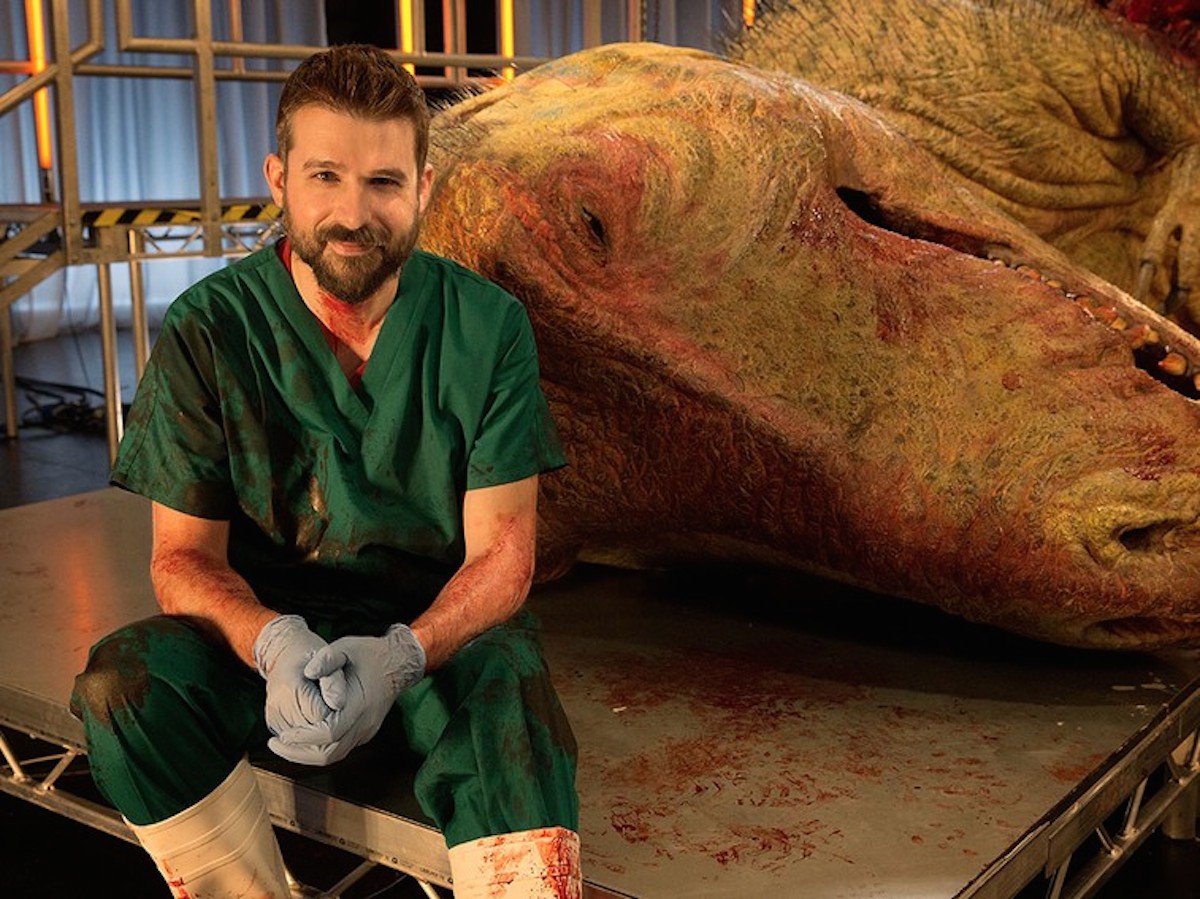The Local newsletter is your free, daily guide to life in Colorado. For locals, by locals.
Scalpel? Check. Fork lift? Erm, check. Chain saw? Now we’re ready.
Morrison Natural History Museum director Matt Mossbrucker was covered in blood for more than 30 hours. No, the sticky red substance wasn’t real, nor was he on the set of a horror flick. Instead, the fake blood was an elaborate prop on the set of a gory Tyrannosaurus rex dissection for the upcoming National Geographic show T. rex Autopsy.

Mossbrucker studies general paleontology, which means he spends many of his days digging for fossils in the Jurassic rock around Morrison. He joined veterinarian Luke Gamble, palaeobiologist Tori Herridge, and paleontologist Steve Brusatte to perform an autopsy on Edwina, the world’s first full-size, anatomically complete T. rex model, in the hopes of uncovering the secrets of the most famous species of dinosaur. Special effects firm Crawley Creatures worked closely with paleontologists and T. rex biologists to ensure that each organ, muscle, and individual hair was placed to the most scientifically accurate specifications. The team hoped the dissection would answer a handful of important prehistoric questions: How did the T. rex feed, move, and procreate? And why did such a colossal animal possess comically short arms?

Photo courtesy of National Geographic
The dissection was filmed in April at Pinewood Studios in the United Kingdom, the same production company that films the James Bond movies. Crawley Creatures spent 10,000 man hours and five months building the 40-foot model, which was not-so-delicately hacked apart by Mossbrucker’s team over the course of two days. Some unorthodox surgical procedures were needed to slice through Edwina’s silicon, foam, latex, wood, steel, and fiberglass body. “When you have an animal of that scale—a school bus-sized critter—one has to get creative, because scalpels just won’t do the job,” Mossbrucker says. “We had to use a chainsaw to lop off the leg.” But by counting the rings in Edwina’s fibula, Mossbrucker’s team was able to determine the age the dinosaur was when she “died.”
The program airs Sunday, June 7 at 7 p.m. MT, and will discuss topics like the dinosaur’s age, cause of death, warm vs. cold blood, and more. Mossbrucker says the show won’t be just “another fluffy mermaid documentary.” “Come for the gore, stay for the science,” he says. “It’s a little bit of Saw meets Jurassic Park, with a healthy dose of Sharknado. It’s highly educational.”








